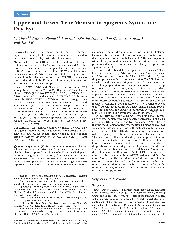摘要
PURPOSE. To measure the tear menisci in Sjogren's syndrome dry eye (SSDE) by optical coherence tomography (OCT) and to determine its relationships with the clinical tests.
METHODS. Twenty-six SSDE, 26 non-SSDE, and 26 control subjects completed the Ocular Surface Disease Index (OSDI) before OCT determination of upper tear meniscus volume (UTMV), lower tear meniscus volume (LTMV), and total tear meniscus volume (TTMV). These were followed by measurements of noninvasive tear breakup time (NITBUT), fluorescein tear breakup time (FTBUT), fluorescein staining, Schirmer test, and corneal confocal microscopy.
RESULTS. UTMV, LTMV, and TTMV were the lowest in SSDE among the three groups (P < 0.05). High sensitivity and specificity of UTMV (1.0; 0.96), LTMV (0.92; 0.92), and TTMV (0.96; 0.96) were found in the diagnosis of SSDE. For SSDE, the areas under the UTMV, LTMV, and TTMV receiver operating characteristic curves were larger than those in NITBUT, FTBUT, and Schirmer test (P < 0.005). In the SSDE group, NITBUT was correlated with UTMV (R = 0.41) and TTMV (R = 0.39) (P < 0.05). Fluorescein staining score was significantly correlated with UTMV (R = -0.46), LTMV (R = -0.41), and TTMV (R = -0.53) (P < 0.05). Superficial epithelial cell density was correlated with UTMV (R = 0.18), LTMV (R = 0.51), and TTMV (R = 0.44) (P < 0.05).
CONCLUSIONS. Tear menisci volumes estimated by OCT may have great potential in the diagnosis and monitoring of SSDE. They can also reflect ocular surface damage and tear film stability. (Invest Ophthalmol Vis Sci. 2011; 52: 9373-9378) DOI: 10.1167/iovs.11-7431
- 出版日期2011-12
- 单位温州医科大学
